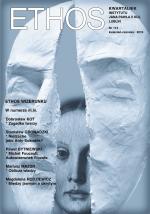Między jawnym a ukrytym. Wizerunek człowieka (āberu) w kulturze perskiej
Between the Apparent and the Hidden: The ‘Good Image’
of a Human Being (aberu) in the Persian Culture
Author(s): Magdalena RodziewiczSubject(s): Social Sciences, Sociology, Sociology of Culture
Published by: Katolicki Uniwersytet Lubelski Jana Pawła II - Instytut Jana Pawła II, Wydział Filozofii
Keywords: aberu; good name; reputation; image; Persian culture; Sufi sm; Shi’ism; Persian poetry
Summary/Abstract: The purpose of the article is an analysis of the concept of ‘good image’ (or aberu in the Persian language) in the Iranian culture. The research presented in the paper has been based on Persian source texts of different types, including Shiite religious literature and mystical poetry. Given the characteristic features of the perception of reality in the Iranian culture as manifesting itself both in an apparent and in a hidden dimensions (zaher and baten), truth is seen in the Iranian imagination as predominantly hidden, covered by layers of appearances. Likewise, the human being, part of God’s reality, is portrayed as possessing an inner, stable and precious core surrounded by apparent, changeable exterior. In view of the above, the concept of aberu rooted in the Iranian culture, may be interpreted as the veil which separates these two spheres. The main task of a human life is therefore protecting its inner reality from disclosure and from contact with the outside world. Tearing the veil of aberu is considered as destroying the good image and equivalent to shame and embarrassment. For this reason, both Shiite ethical texts and belles-lettres include warnings against the loss of aberu and encourage its strengthening and preservation.
Journal: Ethos. Kwartalnik Instytutu Jana Pawła II KUL
- Issue Year: 29/2016
- Issue No: 2
- Page Range: 245-265
- Page Count: 21
- Language: Polish
- Content File-PDF

